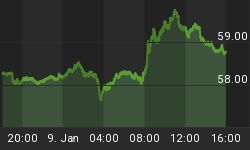One of the most persistent economic fallacies has been the idea that cutting costs is good for an economy. Probably the saddest example of this error was seen in the policies which led to the slump in the 1930s.
Andrew Mellon was Secretary of the US Treasury in 1929. When that bubble burst, he wanted to "liquidate labour, liquidate capital, liquidate stocks, liquidate the farmers, and liquidate real estate". He believed that if companies cut costs, profits would improve and the economy would recover.
He was, to put it mildly, wrong. This is because one company's costs are the income of its employees or suppliers. If costs fall, then so do incomes, and when incomes fall, so does demand. When there is excess capacity and unemployment, the aim should be to boost demand not to cut costs.
For fifty years or more, it has been accepted that cost cutting makes recessions worse not better. It has been agreed that policy makers should not try to reduce excess capacity by cutting it out, they should reduce it by getting demand to rise by fiscal or monetary stimulus.
The policy has been so successful that the lesson is now in danger of being forgotten. This has been particularly true in Japan, where the obvious existence of excess capacity has brought out Mellon like cries to liquidate capital. As if the lessons of the past had never been learnt, it is regularly claimed that reducing capacity would solve Japan's troubles.
In fact capacity has been cut and it has been cut heavily. Over the past four years, manufacturing capacity in Japan has fallen by nearly 5%. As companies have continued to invest at a far faster pace than in other major economies, this must have involved a huge amount of scrapping.
Despite this, it is most obvious that Japan has not recovered. This should have come as no surprise. When capacity is scrapped it is naturally the most inefficient plants that are the first to go. The result is that employment falls even faster than capacity and, unless the savings rate changes, this means that demand falls by even more than capacity, and the amount of excess capacity rises rather than falls.
The idea that similar nonsense policies would help to reduce excess capacity in America and Europe has not yet become the fashion. While foreigners recommend this policy for Japan, it seems they don't want it applied at home. It's for export only.
There is a new governor of the Bank of Japan due to take over on 19th March. If he changes policy Japan could escape from its decade of stagnation. If it does, the recovery is likely to follow an interesting and probably unexpected pattern.
If monetary policy is eased enough, then the yen will weaken. This should get exports expanding and improve profits in manufacturing. This may have the bizarre effect of increasing investment temporarily, even though Japan is already investing far too much.
After a while, however, rising demand and a weak currency should combine to cause a shift from deflation to inflation. There should then be a honeymoon period in which interest rates will not only be low in nominal terms, but in real ones as well. The excess debts in the economy will then melt away under the impact of rising prices and low interest rates.
In due course, interest rates will have to rise. We will then have the conditions which the "Mellon men" would like to see now. Banks will be unwilling to lend to duff companies in order to keep them afloat and many companies will go bust.
At the moment, interest rates are so low that banks don't have to lend additional money to companies so that they can pay interest on their loans. So banks don't push companies into bankruptcy. It's a mistake, because the companies' assets are falling in value and the debts aren't, so the longer the banks wait, the more they lose in the end. It's one of the delusions created by deflation.
Once interest rates are off the bottom, banks will have to lend more money to keep the zombies from going bust. The bankruptcies will then help the economy, because demand will be strong and the more efficient companies will be ready to hire those who lose their jobs.
Currently Japan has the macro-economic problem of insufficient demand. Later it will have many micro-economic problems, for which bankruptcy will be the sensible solution.
The micro-problems can't be solved until the macro-one is cured. Prime Minister Koizumi once said that growth was impossible without reform and reconstruction. He got things in the wrong order. If Japan wants reform and reconstruction it must first get growth.















